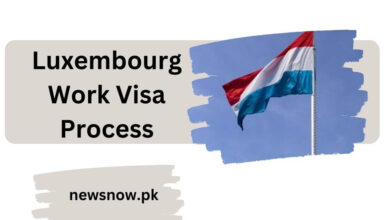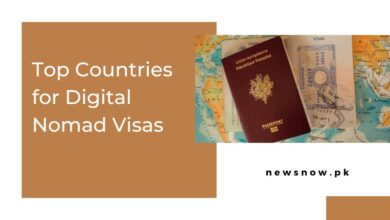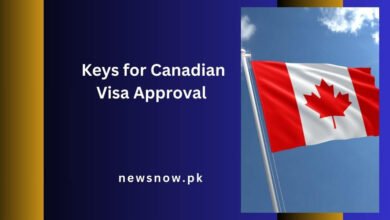How to Convert Visitor Visa to a Work Permit in Canada
Individuals who are seeking employment opportunities and educational opportunities frequently travel to Canada. However, a significant number of prospective students and laborers may initially enter Canada using a temporary resident’s or visitor’s visa for a variety of reasons.
In this blog, we will explore the process of converting a visitor visa into a study or work permit in Canada. We will provide a comprehensive explanation of the procedures required to transition from a visiting status to a study or work visa, as well as dispel common misconceptions and analyze the intricacies of Canadian visa laws.
The Visitor Visa
Visitors are permitted to enter Canada for a limited period to attend conferences, and vacations, and visit relatives and acquaintances. This is known as a visitor’s visa. It is crucial to bear in mind that the purpose of your visit must correspond with the criteria specified in your visa application. Modifying the stated objective or remaining beyond the permitted duration may result in complications with Canadian immigration authorities.
Check Also: Major Changes to Canada Immigration System
Benefits of How to Convert Visitor Visa to a Work Permit in Canada:
- Legally Participate in the Workforce: The conversion of a visitor visa to a work permit enables individuals to legally labor in Canada. This transition has the potential to generate a consistent income and create a plethora of employment opportunities.
- Route to Permanent Residency: Programs such as the Canadian Experience Class (CEC) under the Express Entry system can enhance an individual’s eligibility for permanent residency by their Canadian work experience. This route has the potential to result in long-term residency and, in the end, citizenship.
- Addressing Skill Deficits: Skill shortages are prevalent in numerous Canadian industries, with a particular emphasis on technology, professions, and healthcare. By converting to a work permit, visitors with pertinent skills can address these voids, thereby enhancing their likelihood of securing employment promptly.
- Acquiring Work Experience in Canada: Canadian work experience is highly regarded for prospective immigration opportunities. By obtaining a work permit, individuals can acquire this experience, which can enhance their prospects of securing better job positions or transitioning to permanent residency.
- Increased Employment Prospects: Individuals are permitted to apply for a broader selection of positions than those available on a visitor visa once they have obtained a work permit, which enables them to pursue employment in their area of expertise.
- Prospect for Career Advancement
A work permit allows individuals to establish and advance their professions in Canada, fostering the development of professional networks and the acquisition of skills that are valued in the Canadian job market. - Employee Benefits Accessibility: In addition to healthcare, retirement savings plans, professional development opportunities, and paid time off, employment frequently includes these additional benefits. The quality of life and financial stability can be enhanced by gaining access to these benefits.
- Improved Financial Security: Working in Canada offers a consistent source of income, which can assist individuals in meeting their financial obligations and accumulating savings for the future. This financial stability is particularly advantageous for individuals who intend to remain in Canada for an extended period.
- Work-Life Balance: Canada is recognized for its commitment to employee rights and work-life balance. A work permit enables individuals to capitalize on these standards, thereby enhancing their personal well-being and professional satisfaction.
- Eligibility for Provincial Nominee Programs (PNPs): Applicants with Canadian employment experience are prioritized by certain Provincial Nominee Programs (PNPs). By converting a visitor visa to a work permit, individuals are granted the opportunity to apply for permanent residency through specific PNPs, thereby expanding their options.
Purpose and Duration of Stay
Typically, a Visitor Visa enables an individual to access and remain in Canada for a maximum of six months at a once. The final decision regarding this period is made by immigration officials at the Port of Entry. Extending one’s stay beyond the authorized duration is strictly prohibited and results in severe penalties, such as deportation and future visa restrictions.
Transitioning to Study or Work Permits
A lot of people use visitor visas to enter Canada to pursue job or educational possibilities. It’s crucial to realize that a visitor’s visa does not grant the right to work or study in the nation. Obtaining the necessary work permit or study permission is necessary if you want to participate in employment activities or study programs.
Applying for Study Permits
In order to convert your visitor visa into a study permit, you must satisfy specific qualifications. This typically involves demonstrating financial stability to fund your education, meeting security and health requirements, and being admitted to a Canadian Designated Learning Institution (DLI).
To apply for a study permit, the applicant must submit the necessary documents, pay the necessary fees, and provide supporting documentation, such as a study plan, an acceptance letter, and evidence of financial assistance.
Applying for Work Permits
The requirements for transitioning from a guest visa to a work permit are consistent, contingent upon the type of employment you intend to pursue. Two examples of this are receiving a job offer from a Canadian business that has received a favorable Labor Market Impact Assessment (LMIA) or being eligible for a specific category of work visa, such as the International Experience Canada (IEC) program.
The application process for work permits also entails the completion of the requisite documents, the payment of fees, and the submission of supporting documentation.
Key Considerations and Myths
The conversion of a visitor visa into a study or work permit in Canada is frequently misconstrued. It is a prevalent misconception that individuals can modify their visa type without undergoing the formal application process. It is imperative to dispel these misconceptions and to understand the distinctive requirements for each Visa type.
Additionally, there is a misconception that a foreign visa authorizes employment or academic pursuits. A visitor’s visa does not grant the holder the right to work or study in Canada, despite it being a prevalent misconception. The legal consequences of unauthorized activity can be severe. In order to pursue educational or professional opportunities, it is necessary to possess a pertinent work permit or study permit.
Eligibility and Application Process
The criteria for study and employment permits are contingent upon the specific category and circumstance. For example, candidates for study permits may be required to submit evidence of their academic background, financial stability, and linguistic proficiency. In the same vein, candidates for work permits must satisfy the requirements for employment offers, credentials, and employer compliance.
Detailed Process for Converting Visa Types
Study Permit Application Process
- Obtaining admission from a designated educational institution (DLI)
- Financial capacity: demonstrate the ability to cover living expenses, tuition, and return. Moving
- Security and health checks: if required, provide police clearance documents and the results of your medical examination.
- Application submission: submit the study permit application form, pay the application fee, and submit any required supporting documentation.
- Study plan and intent: Formulate a comprehensive study plan that delineates your academic career goals in Canada.
- Interviews and biometrics: Attend the biometrics appointment and interview as required by the immigration authorities.
Work Permit Application Process
Obtain a job offer from a Canadian employer by satisfying the LMIA standards or reaching the requirements of a specific work permit category.
- LMIA or waiver: ensure that the employer has received a positive LMIA or qualifies for an LMIA exemption and has complied with all relevant requirements.
- The application must be submitted by completing the work permit form, paying the processing charge, and attaching the requisite supporting documents (LMIA confirmation, proof of qualifications, and employment offer letter, if applicable).
- Employer compliance: ensure that the organization adheres to the immigration and employment regulations of Canada.
- In order to convert a visitor visa into a study or work permit in Canada, it is necessary to adhere to visa requirements, plan, and understand the application process. By adhering to the guidelines and refuting prevalent misconceptions, individuals can successfully navigate the immigration process and pursue their educational or professional aspirations in Canada.
Conclusion
Certain procedures and documentation are required to transition from a tourist visa to a work or study permit. It is imperative to adhere to Canadian immigration regulations, exercise caution during the process, and seek guidance from reputable sources.
By comprehending the intricacies of visa regulations and adhering to the appropriate procedures, individuals can enhance their likelihood of obtaining the desired study or work permit in Canada. We recommend that you consult official Canadian immigration resources or seek the assistance of knowledgeable immigration professionals for additional information or assistance with the visa application process.
Stay informed about the most recent information on visa application processes, work permits, pathways to permanent residency, and visa-sponsored employment by following us on Newsnowgh.com.
Fraquality Asked Question:
Can ik switch from visitor visa to work permit in Canada?
If a candidate has a travel visa, the only way to change it is to re-apply for a Canadian visa with a work permit. If the candidate’s profile meets the eligibility requirements of employment and he/she possesses all valid documents, the immigration department may approve his/her profile for a work visa.
Can I convert my visitor visa to Canada?
U.S. immigration law (under section 245(a) of the Immigration and Nationality Act (INA)) allows people to file for a change of status (Adjustment of Status) of they enter the United States on a visitor visa and meet the requirements to apply for lawful permanent residency (LPR) in the U.S. But the applicant is to meet.
Is it hard to convert a visit visa to work permit in Canada?
Visitors applying to change from visitor status to a work permit will need a valid job offer from a Canadian employer to apply for an employer-specific work permit. (Open work permits are not usually an option).




